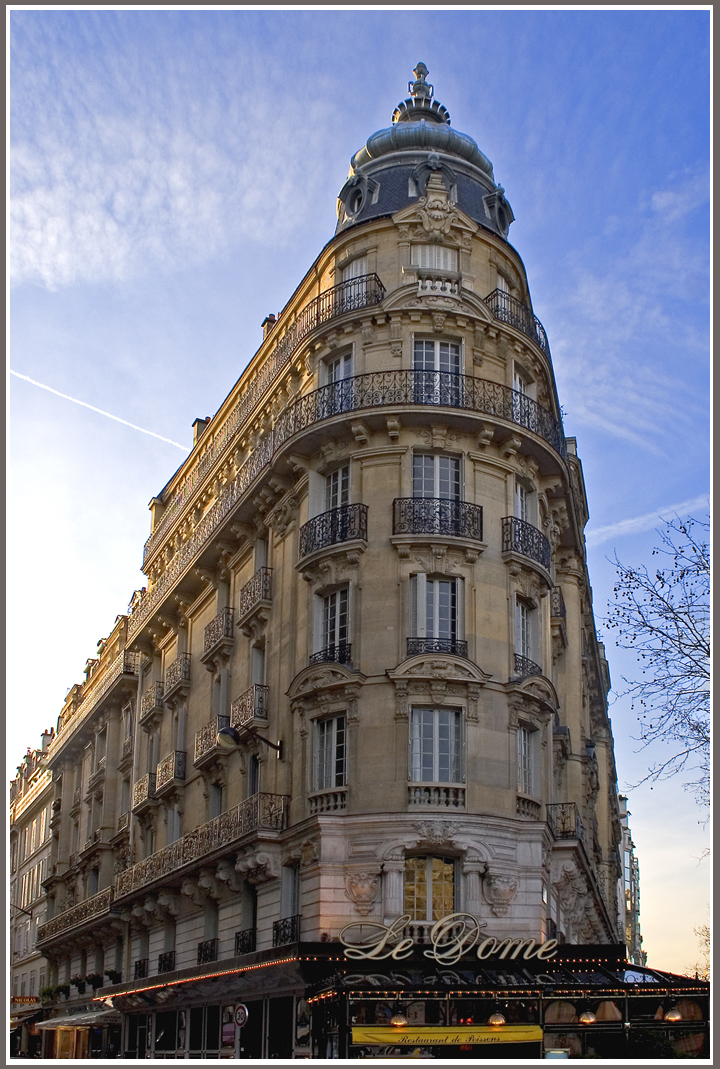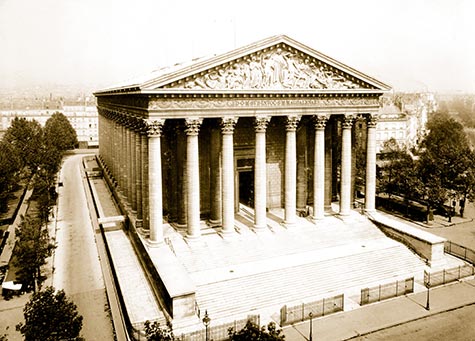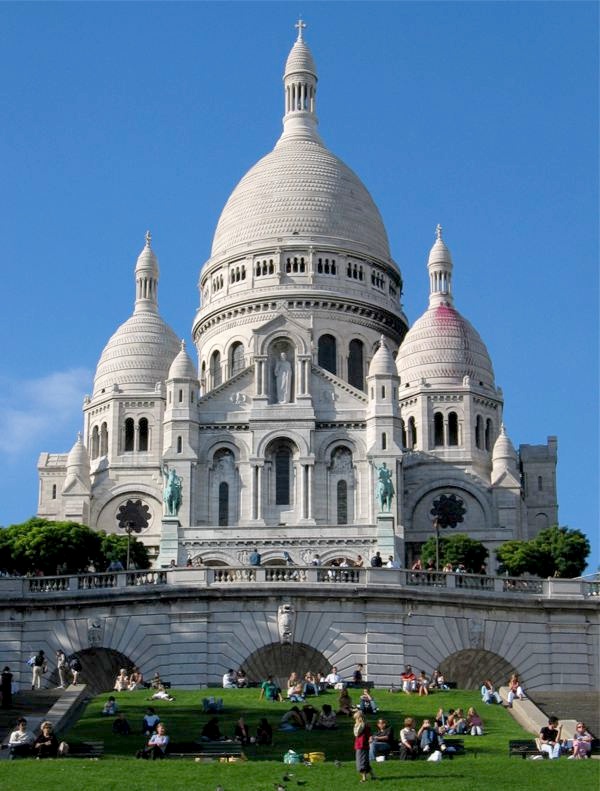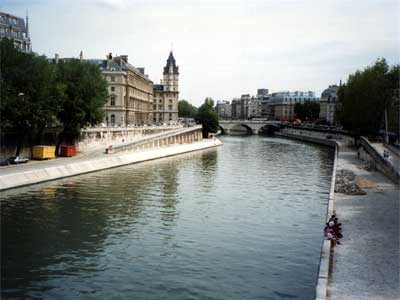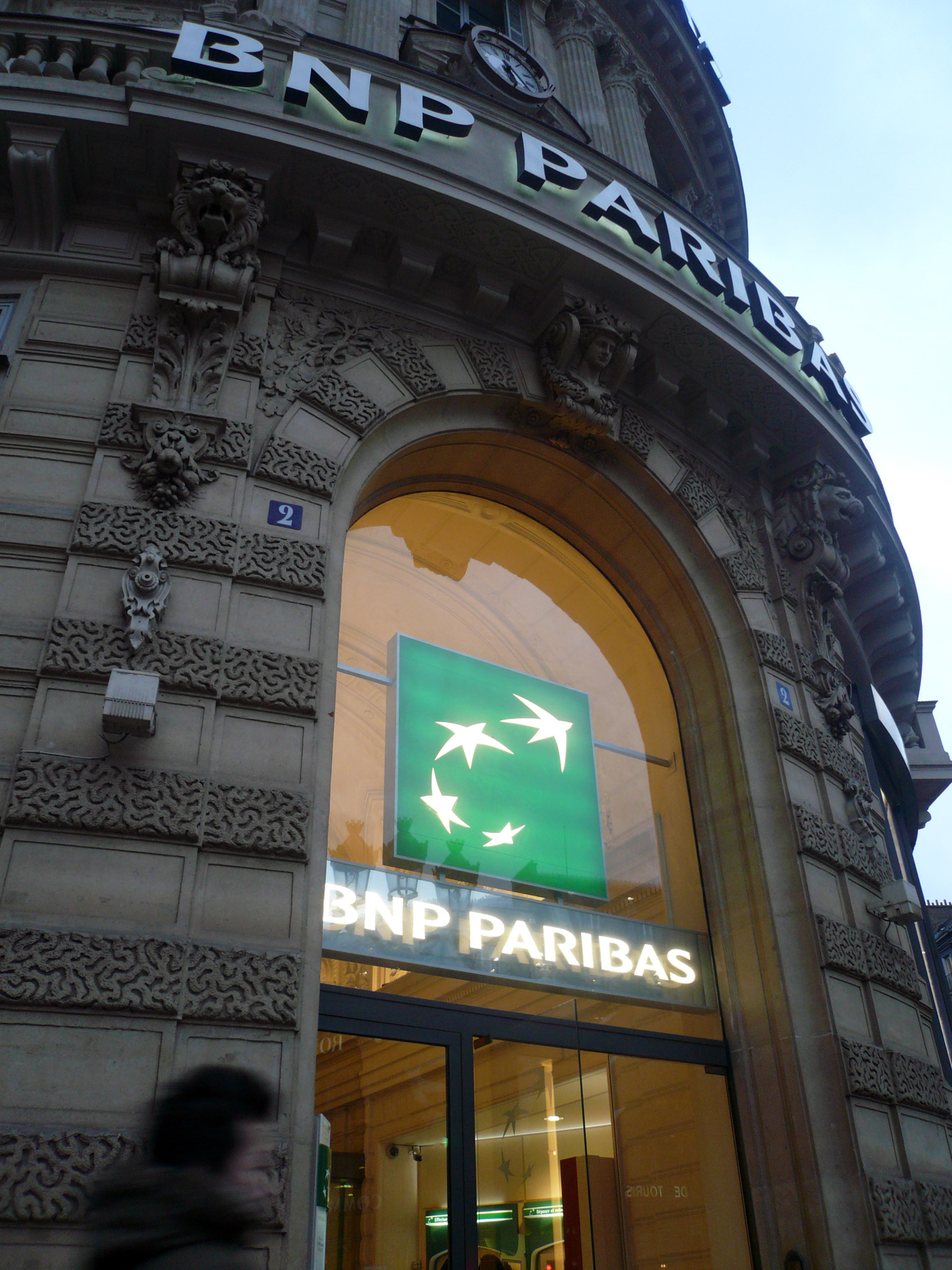 |
| Paris, France |
The Belle Époque (French for "Beautiful Era") was a period in European social history that began during the late 19th century and lasted until World War I. Occurring during the time of the French Third Republic and the German Empire, the "Belle Époque" was named in retrospect, when it began to be considered a "golden age" the major powers of Europe, new technologies improved lives and the commercial arts adapted Renaissance and eighteenth-century styles to modern forms. In the newly rich United States, emerging from the Panic of 1873, the comparable epoch was dubbed the Gilded Age. In the United Kingdom, this epoch overlaps the end of what is called the Victorian Era there and the period named the Edwardian Era.
Urban Architecture:
It was during the Belle Époque that reinforced concrete got invented in Paris, France
- Engineer/Constructor Francois Hennebique and gardener Joseph Monier were amongst the principal inventors of this revolutionary innovation
- Fortresses and fortifications were replaced by social housings, parks, and sports facilities
From 1910-1930, over 15,000 Hectares of countryside were swallowed up by buildings
- The invention of reinforced concrete played a big roll on this
- Due to the lack of control of the urbanization going on, this left Paris today with a lot of empty buildings and a depressing sprawl in some areas
- Art Nouveau architecture
- Classicism architecture
- International Style architecture got introduced
- The Eiffel Tower
- The Petit Palace
- Pont Alexandre III
- The Grand Palace
- The Sacre Coeur
- The Right and Left Banks split by the river Seine
 |
| medieval Parisian street |
 |
| "Boulevard Haussmann" |
The urban planning of the period was guided by the Haussmann Plan, which was carried out from 1852-1870. The plan almost completely altered the remnants of the Medieval city that, at the time, characterized Paris. The plan instituted the following changes:
- Created Large Avenues
- Added Numerous Monuments
- Mass migration from the country villages, due to industrialization, led to increasing demands for urbanization of the city.
- Paris built plumbing and sewer systems and took other similar steps towards improved public health.
- Baron Haussmann was chiefly responsible for planning the remodeling of the medieval city.
- Haussmann’s renovation of Paris’ design was influenced by military need.
- Thoroughfares were incorporated, facilitating faster movement of soldiers and artillery.
- The new streets would hinder barricading and buildings set farther away from the streets would be harder for enemies to garrison.
- Haussmann’s design did away with the claustrophobic, irregular passageways and transformed the city with an open and logical layout.
- Creating wider streets alleviated the congestion caused by the close quarters because the height of buildings could increase.
- Widening of the streets also helped city dwellers move around with greater ease.
- Little change has been integrated into the building code system since the Belle Epoque
- Even today, the height of Parisian building facades must be built in accordance with street width, following the alignment law.
Environmental Factors:
- Caused population growth
- Because of location of factories, families moved to the cities quickly turning into conurbations (continuous network of urban communities.)
- As a result of the influx, new health problems arose.
- Mortal diseases were being cured
- Infant mortality rates decreased considerably
- Life expectancy increased
Flourishing of the financial sector such as the 1869 founding of Banque de Paris, which in its modern form as the Banque Nationale de Paris Paribas is the world’s largest banking group, with over $3.1 trillion in assets.
Graduates from France’s Grandes Ecoles (Elite Schools), formed the leadership and policy-making apparatus of industry, expanding rail networks and facilitating Paris’ late entry into the industrial revolution.
The creation of a new working class from the peasants of prior era gave Paris the much needed workforce for industrialization
France’s defeat in the Franco-Prussian War stagnated Parisian economic development from the latter stages of the 19th century through the turn of the 20th century.
Political Factors:
(Napolean III)
(Third Republic Coat of Arms)
 |
| World War I |
- The Belle Epoque lasted approximately from 1871 to 1914
- Translated as the “beautiful age”
- France’s defeat in the Franco-Prussian War, also known as the 1870 War, put a sudden end to the French Second Empire under Napoleon III
- The Third Republic of France was then formed in 1871, and was in power until 1940, when it collapsed following the surrender to Germany early in World War II.
- The political entities of the Third Republic included the Legitimists, the Orleanists, and the Bonapartists, among others.
- In the first decade of the Third Republic’s existence, debate regarding the best form of government, monarch and republic, persisted.
- A time of relative peace and stability ensued. The new government was not as strong or imperious as the former had been.
- In 1877, the Legitimists, who recognized the progeny of Charles X as heir to the throne of France, were forced out of their position of power by the Republicans, a political party who supported who conservative, yet constructive changes to the new system of government.
- This government reputedly brought the least amount of division to France since not a single political party was able to assume complete control.
- Peace prevailed throughout central and west Europe during this time. The powerful German Empire worked to ensure further instances of widespread violence in the region did not occur.
- France worked to expand the breadth of its empire by attempting to colonize parts of Africa. The collective efforts of European nations to acquire land in Africa are contemporarily referred to as the “Scramble for Africa.”
- Toward the end of the Belle Epoque, many western European nations, especially France, feared the formidable German empire and their impressive domain.
- In the latter years of this age, political factions were becoming more defined and differentiable. This time of peace was approaching its end.
- Negotiated an alliance with Russia in 1894 for the purpose of securing financial investments and security.
- The Radical-Socialist party was founded in 1901, eventually becoming the dominant political faction of the 20th century during the time of the Third Republic in France
- In addition to this fear, much of the French citizenry were still angry about the loss to Germany in the Franco-Prussian War. This anti-German sentiment reached its critical point in 1914 with the outbreak of World War I.
The Belle Epoque period was an era of social renaissance. The period was characterized by the lavish lifestyle lived by the upper-class citizens. Things that become popular during the period include:
- Lavish restaurants
- Operas
- Railways that linked Paris to coastal "resort" towns
- Increase in leisure time
- An all around increase standard of living
- Fashion - Flashy and innovative dress was not uncommon
The flair for the lavish was not exclusive to the upper class. A new era of working class individuals (that were given jobs because of the rapid increase in industry) started participating in cultural events for the first time. Cabarets entertained the masses as a new sense of optimism was cast upon the people of Paris, creating a city teaming with vibrancy and life.
A Few More Pictures:
References:
The architecture of Paris: an architectural guide. By: Andrew Ayers
The Independent Newspaper, UK. 48 hours in: Belle Époque, Paris
The European Belle Epoque. Belle Epoque.
http://www.la-belle-epoque.de/beintroe.htm
"France." Encyclopædia Britannica. Encyclopædia Britannica Online. Encyclopædia Britannica, 2011. Web. 15 Feb. 2011. <http://www.britannica.com/EBchecked/topic/215768/France>.
The Gate of Paris; The Arch of Triumph and Old Paris; Hausmann the Magnificent and His Work; The Tinsel Empire and Its Provisions for Immortality; The American Quarter and Its Glories; Bombs, Barricades and Desolation. The Leveling of Old Paris. The Building of the New Capital. The Arch of Triumph and its Surroundings. The Glory Departed. The New York Times, May 14, 1871, Page 3.
"France." Encyclopædia Britannica. Encyclopædia Britannica Online. Encyclopædia Britannica, 2011. Web. 15 Feb. 2011. <http://www.britannica.com/EBchecked/topic/215768/France>.
The Gate of Paris; The Arch of Triumph and Old Paris; Hausmann the Magnificent and His Work; The Tinsel Empire and Its Provisions for Immortality; The American Quarter and Its Glories; Bombs, Barricades and Desolation. The Leveling of Old Paris. The Building of the New Capital. The Arch of Triumph and its Surroundings. The Glory Departed. The New York Times, May 14, 1871, Page 3.
Hutton, Patrick H. Historical Dictionary of the Third French Republic, 1870-1940 1986.
Lehning, James R.; To Be a Citizen: The Political Culture of the Early French Third Republic. 2001.
Mayeur, Jean-Marie, and Madeleine Rebirioux. The Third Republic from its Origins to the Great War, 1871-1914. The Cambridge History of Modern France. 1988.
Wilde, Robert. European History. About.com. http://europeanhistory.about.com/od/france/a/belleepoque.htm
www.awestenberg.com/LaBellePowerPoint.ppt
http://www.jahsonic.com/Haussmann.html
Images:
http://upload.wikimedia.org/wikipedia/commons/6/6e/Francecoatofarms1898-2.png
http://saint.vert.free.fr/napoleonIII.jpg
http://upload.wikimedia.org/wikipedia/commons/8/86/WW1_TitlePicture_For_Wikipedia_Article.jpg
http://www.destination360.com/europe/france/images/s/paris-france.jpg
http://en.wikipedia.org/wiki/File:Blv-haussmann-lafayette.jpg
· http://www.google.com/imgres?imgurl=http://www.laits.utexas.edu/wettlaufer/architecture/images/0103oldparis.jpg&imgrefurl=http://www.laits.utexas.edu/wettlaufer/architecture/dpari.html&usg=__uskJa6o1jTL5iRoBU_bk3i8voCM=&h=600&w=497&sz=52&hl=en&start=0&sig2=adnmEQ2-gSj3pvdqrKDGUA&zoom=1&tbnid=GfrVKXYFHkelkM:&tbnh=185&tbnw=147&ei=jXtcTfLeMMWBlAf90ZHuCQ&prev=/images%3Fq%3Dphotos%2Bof%2Bold%2Bparis%26um%3D1%26hl%3Den%26sa%3DN%26rlz%3D1C1RNPN_enUS395US395%26biw%3D1280%26bih%3D677%26tbs%3Disch:1&um=1&itbs=1&iact=hc&vpx=1035&vpy=266&dur=1185&hovh=247&hovw=204&tx=86&ty=165&oei=jXtcTfLeMMWBlAf90ZHuCQ&page=1&ndsp=18&ved=1t:429,r:11,s:0
http://www.youtube.com/watch?v=GBnGgYJWliw&feature=player_embedded
| http://www.arthistoryarchive.com/arthistory/architecture/Haussmanns-Architectural-Paris.html |
